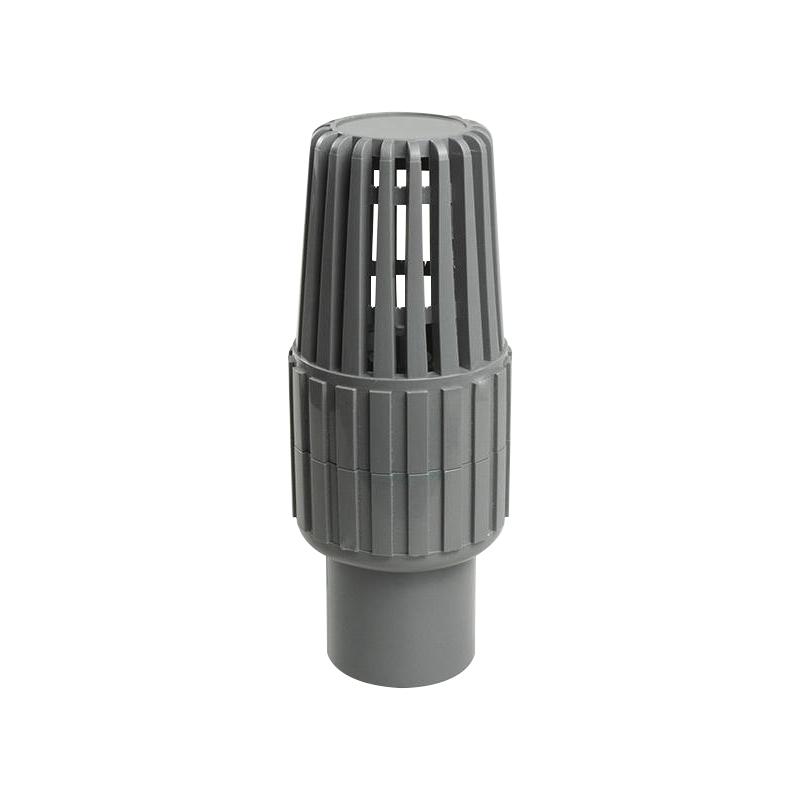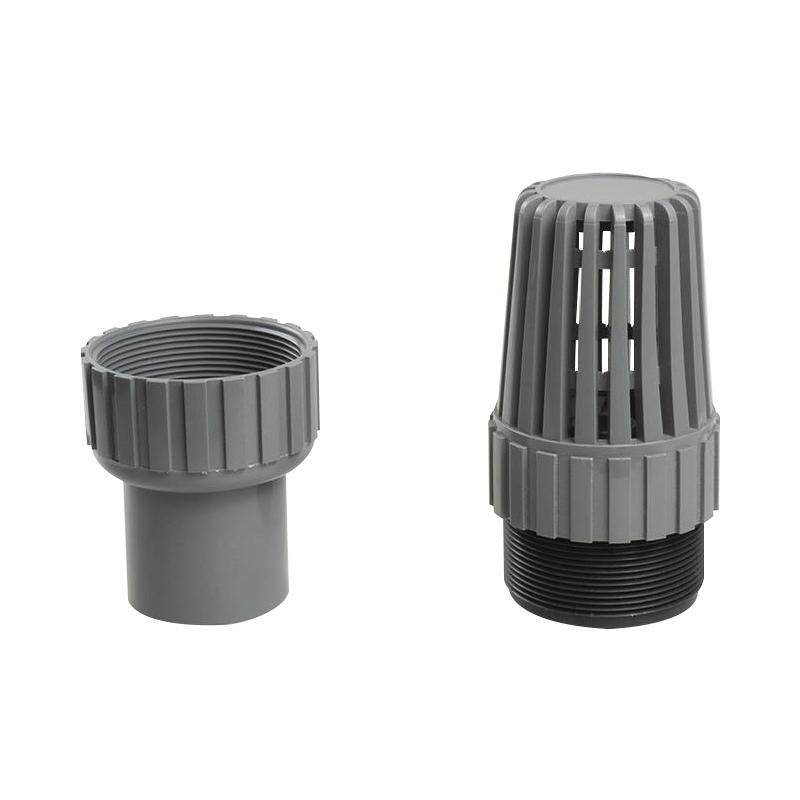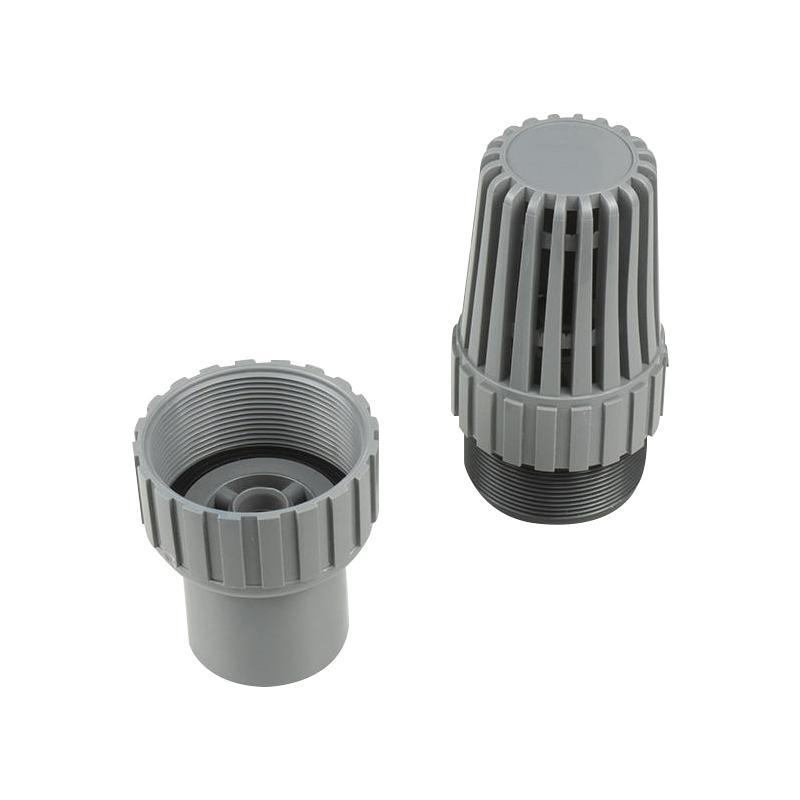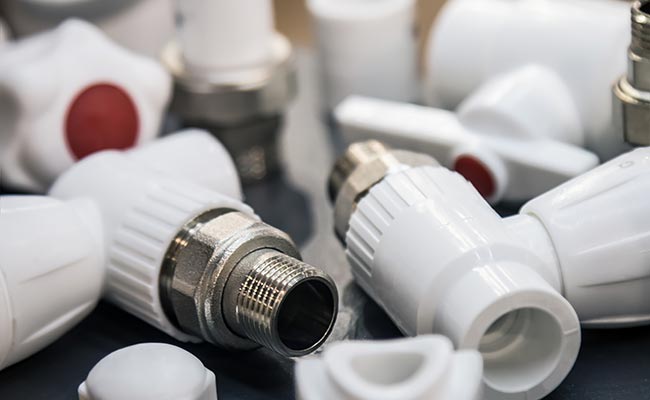
PVC Foot Valve technology supports water management systems by preventing backflow and reducing pump damage. Many regions now prefer these valves for their strong corrosion resistance and easy installation.
In 2024, about 80% of U.S. water systems used PVC components, and Europe saw 68% adoption in new water infrastructure.
| Region | PVC Usage in Water Systems (2024) |
|---|---|
| U.S. | ~80% |
| Europe | 68% |
Homeowners and professionals rely on these valves for durable, eco-friendly solutions.
Key Takeaways
- PVC foot valves prevent backflow and protect pumps by allowing water to flow only one way, keeping systems primed and safe.
- These valves offer strong corrosion resistance, long service life, and cost savings compared to metal alternatives, making them reliable and affordable.
- Easy to install and maintain, PVC foot valves support eco-friendly water management by reducing waste and lowering the need for harsh chemicals.
How PVC Foot Valve Prevents Backflow

What Is a PVC Foot Valve
A PVC Foot Valve is a special type of check valve installed at the bottom end of a pump’s suction pipe. It allows water to flow in only one direction—toward the pump. The main parts include a strong PVC body, a screen or strainer to block debris, a flap or disc that moves with water flow, and a seat that seals the valve when needed. Some designs use a spring to help the flap close tightly. These parts work together to keep water moving smoothly and protect the pump from damage.
Tip: The screen or strainer at the inlet helps keep out leaves, sand, and other particles, making the valve last longer.
Backflow Prevention Mechanism
The PVC Foot Valve uses a simple but effective mechanism to stop backflow. When the pump starts, suction opens the flap or disc, letting water move up into the pump. When the pump stops, gravity or a spring pushes the flap closed against the seat. This action blocks water from flowing backward into the source. The valve keeps water inside the pipe, so the pump stays primed and ready for the next use. The mesh-like structure also filters out larger impurities, keeping the system clean.
- The valve opens with forward water flow.
- It closes quickly when flow reverses, using gravity or spring force.
- The screen blocks debris and protects the pump.
Importance for Pump Protection
PVC Foot Valves play a key role in protecting pump systems. They prevent backflow, which can cause hydraulic shock and damage pump parts. By keeping water in the system, they stop air from entering and reduce the risk of dry running. This helps pumps last longer and work more efficiently. The valve’s durable PVC material resists corrosion and needs little maintenance. Regular cleaning of the screen and proper installation help avoid common problems like clogging or leaks.
| Common Application Area | Description |
|---|---|
| Water Pumps | Maintains pump priming and prevents backflow |
| Agricultural Irrigation | Ensures steady water flow for crops |
| Rainwater Harvesting | Controls water movement in collection systems |
| Industrial Piping | Protects equipment from reverse flow |
| Swimming Pools | Keeps water clean and prevents pump damage |
Key Benefits and Advancements of PVC Foot Valve in 2025

Corrosion and Chemical Resistance
PVC Foot Valve stands out for its strong resistance to corrosion and chemicals. Many industries use these valves in environments where acids, bases, and salt solutions are common. Unlike brass valves, which can corrode or suffer from chemical reactions, PVC valves keep their strength and shape. They do not rust or break down when exposed to harsh chemicals. This makes them a top choice for chemical processing, water treatment, and wastewater systems. The material also resists sunlight and oxidation, so the valve keeps working well even in outdoor or exposed settings.
Cost-Effectiveness and Value
Choosing a PVC Foot Valve helps save money. In 2025, these valves cost about 40-60% less than metal alternatives. This lower price means homeowners and professionals can install reliable systems without high upfront costs. The lightweight design also reduces shipping and handling expenses. Over time, the valve’s durability and low maintenance needs add even more value. People find that these valves offer a smart balance between price and performance.
Note: Lower costs do not mean lower quality. PVC valves deliver reliable results in many settings.
Durability and Long Service Life
PVC Foot Valve offers a long service life. The material has high flexural and tensile strength, so it can handle pressure and stress. The valve design prevents backflow and keeps pumps safe from damage. Many users report that these valves last for decades with proper care. The smooth inner walls reduce friction and wear, helping the valve stay in good condition. This durability makes the valve a trusted choice for both home and industrial use.
| Factor | Contribution to Value Proposition |
|---|---|
| Foot valve design | Streamlined, low-profile designs reduce flow resistance, improving pump efficiency by lowering energy consumption. |
| Material choice | Materials like PVC provide cost-effectiveness and corrosion resistance. |
| Size and shape | Properly sized valves matching suction pipe diameter maximize water flow and prevent backflow. |
| Installation quality | Correct alignment, secure mounting, and leak prevention ensure optimal valve function and system durability. |
Easy Installation and Maintenance
Many people choose PVC Foot Valve because it is easy to install and maintain. The valve is lightweight, so one person can handle it without special tools. It fits many pipe sizes and connection types, making it flexible for different systems. Maintenance is simple. Regular cleaning of the strainer and valve body prevents clogging. Checking the moving parts and testing for leaks keeps the system running smoothly. These steps help avoid pump damage and system downtime.
- Inspect and clean the strainer and valve body to prevent clogging.
- Check internal parts to ensure proper sealing.
- Test for leaks to catch problems early.
- Maintain the valve to keep pumps primed and efficient.
- Install the valve correctly to ensure long-term reliability.
Eco-Friendly and Sustainable Features
PVC Foot Valve supports eco-friendly water management. The valve’s long lifespan means fewer replacements and less waste. Its corrosion resistance reduces the need for harsh cleaning chemicals. While PVC production has some environmental impact, the valve’s low maintenance and long use help offset this. Brass valves require mining and refining, which can harm the environment. PVC valves, on the other hand, need less energy and resources during use. Many users recycle PVC at the end of its life, supporting sustainability goals.
- PVC valves resist corrosion, reducing the need for chemical cleaners.
- Long service life means fewer replacements and less waste.
- Lower maintenance needs help save energy and resources.
New Materials and Design Improvements
Recent years have brought new materials and design upgrades to PVC Foot Valve. Manufacturers use high-grade PVC for better durability and chemical resistance. Precision molding creates tight seals and perfect fits, which prevent leaks and energy loss. The internal structure now allows water to flow smoothly, reducing pressure drops. Anti-clogging features keep debris from blocking the valve. Secure sealing mechanisms stop backflow and leaks. These improvements make the valve more reliable and easier to maintain. The valve now works well in many industries, from agriculture to chemical processing.
- High-grade PVC increases durability and resistance.
- Streamlined design improves water flow and efficiency.
- Anti-clogging features keep the valve working longer.
- Secure seals prevent leaks and backflow.
- Easy maintenance reduces downtime and boosts productivity.
PVC Foot Valve solutions continue to protect pump systems and prevent backflow in 2025.
- Many industries trust these valves for their long service life and low maintenance needs.
- Case studies show reliable performance in desalination and aquaculture.
| Standard | Requirement in 2025 |
|---|---|
| ISO 21787 | Recyclable plastic valve compliance |
| ISO 15848-3 | Ultra-low leakage in the EU |
FAQ
How long does a PVC foot valve last?
A PVC foot valve can last over 50 years with proper care. Its strong material resists corrosion and damage in many water systems.
Can a PVC foot valve handle chemicals?
Yes. The valve resists acids, alkalis, and many chemicals. It works well in chemical plants, water treatment, and other harsh environments.
Is the PVC foot valve safe for drinking water?
The valve meets health and safety standards. It does not affect water taste or quality. Many people use it in drinking water systems.
Post time: Aug-18-2025




